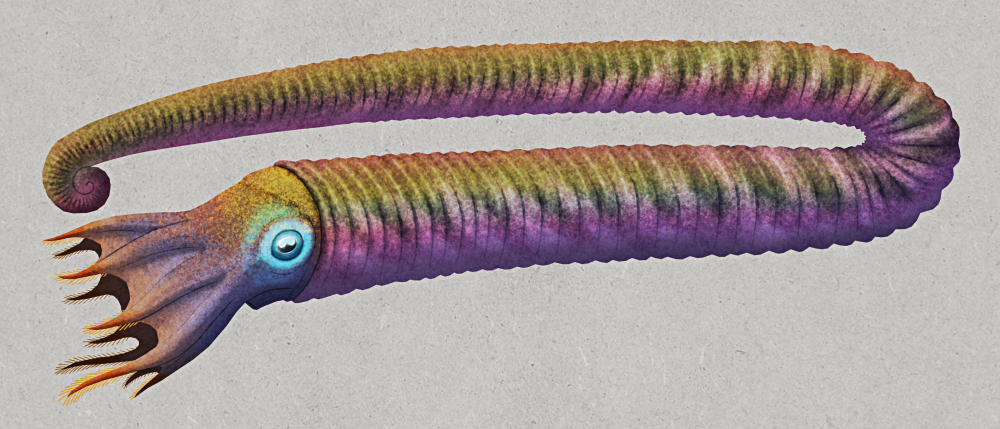Ancyloceratines were a lineage of distinctive-looking ammonites, commonly known as “heteromorphs“, which had unusual uncoiled shells that ranged in shape from near-straight to hooked to helical to paperclip-like to “balls of string“.
Heteromorphs’ strange shells would have created a lot of drag in the water, and they may not have been especially agile swimmers, but they were very hydrodynamically stable and easily maintained neutral buoyancy. Their paleobiology has only just started to be properly understood in recent years, and now most species of these ammonites are thought to have floated suspended in the photic zone and twilight zone of the open ocean, catching small zooplankton from the water around themselves.
What these ammonites were doing obviously worked very well for them, because they were incredibly diverse and successful during the Cretaceous period. They were also the only type of ammonite to persist for a short time after the end-Cretaceous mass extinction, existing as a “dead clade walking” for another half a million years or so before finally disappearing entirely.

The hamitids were a group of heteromorphs from the mid-Cretaceous (~110-90 million years ago), with their namesake genus Hamites traditionally being used as a wastebasket taxon for anything that that didn’t neatly fit into any other group of similar heteromorph ammonites.
By the late 1990s Hamites had become a mess of multiple different diverse lineages, with over 20 species all lumped together – and this was a problem because the hamitids were the ancestors of several other heteromorph ammonite lineages, and having the taxon in such disarray made studying the evolutionary origins of all those other groups very difficult.
So in the early 2000s attempts were made to clean this all up, figuring out the relationships between the different Hamites species and dividing the genus into multiple new genera.
There hasn’t been much more detailed research on the relationships of hamitids since then – and other groups of heteromorphs are still in need of revision – but it’s a start at clearing the wastebasket, at least.
